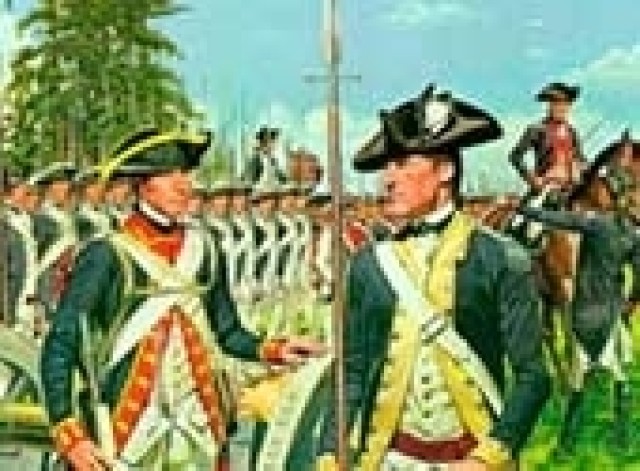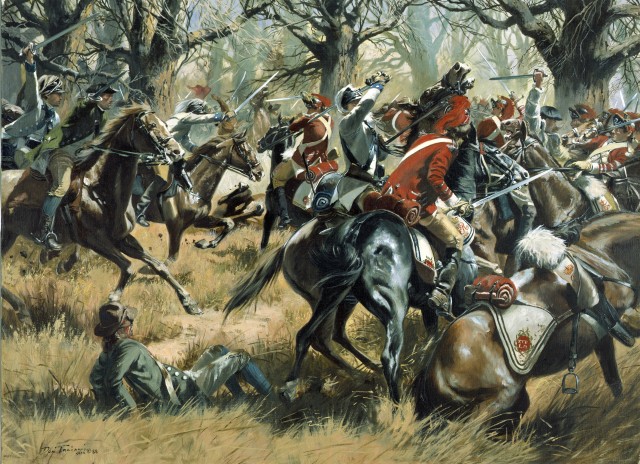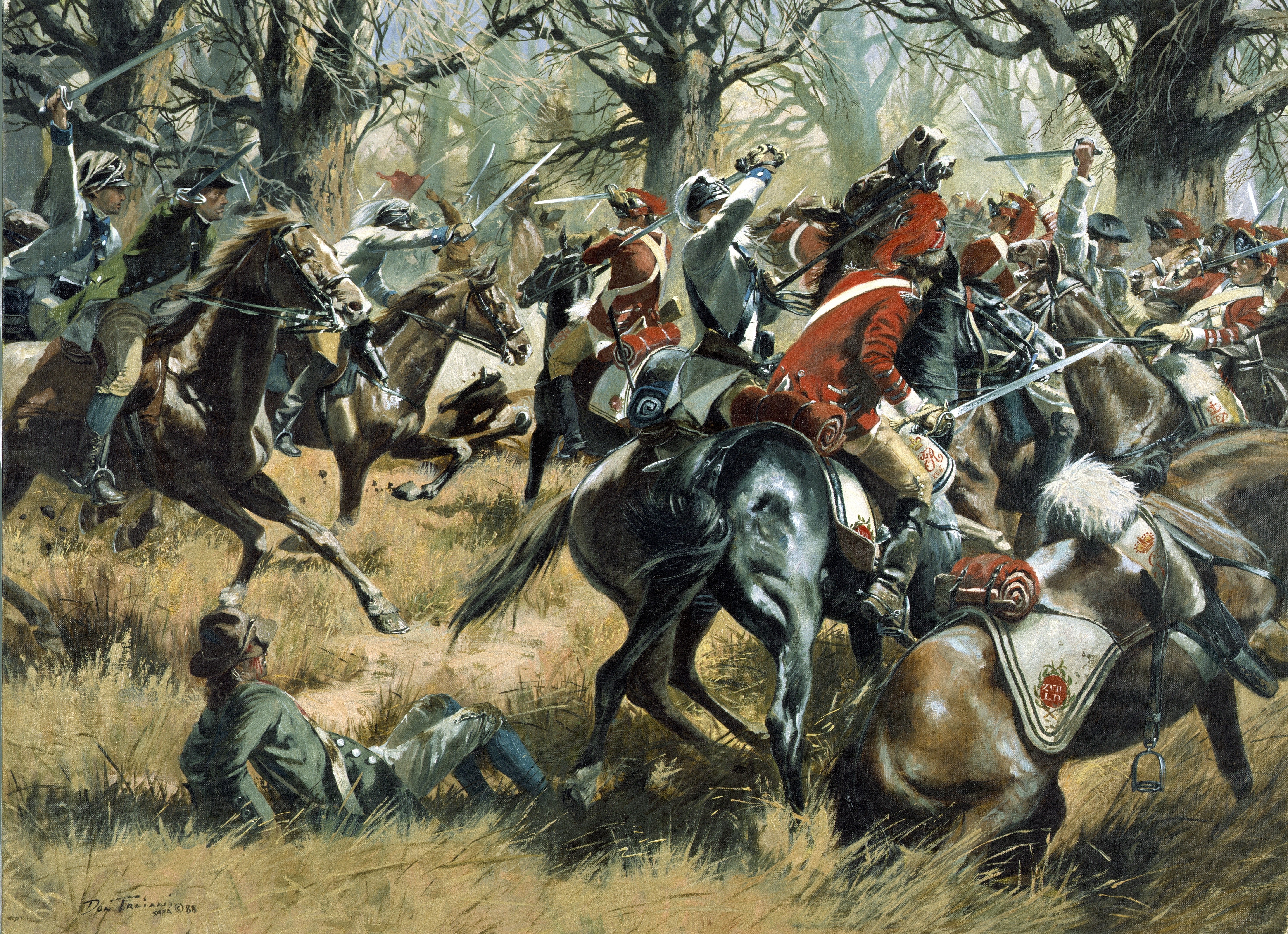Often referred to as the most tactically perfect battle of the Revolutionary War, the Battle of Cowpens pitted the talents of two of that conflictAca,!a,,cs most renowned irregular warriors, Daniel Morgan of the Continental Army, and the British ArmyAca,!a,,cs Banastre Tarleton. Daniel Morgan, the Aca,!A"Old Wagoner,Aca,!A? was a French and Indian War veteran most famous for his command of the Rifle Corps and the decisive role he played in the American victory at Saratoga in October 1777, both of which demonstrated his superb leadership of light troops. Banastre TarletonAca,!a,,cs unremitting operations at the head of the British Legion during the South Carolina campaign of 1780, as well as his ruthless policy, gained him the sobriquet Aca,!A"Bloody Ban.Aca,!A? His shock tactics concurrently became known as Aca,!A"TarletonAca,!a,,cs Quarter.Aca,!A?
That 1780 campaign began with major victories by British Generals Sir Henry Clinton and Charles, Earl Cornwallis at Charleston and Camden, respectively. Thereafter General George Washington hand-picked Major General Nathanael Greene to command the Southern Department. Greene took the war in a different direction. He assigned part of his army to Morgan, who marched his column into South Carolina and ran before Cornwallis, forcing the British general to divide and scatter his larger force. Cornwallis in January 1781 dispatched Tarleton to deal with the wily frontiersman.
On January 16, Morgan stopped running and encamped his forces at a place known as the Cowpens in South Carolina. MorganAca,!a,,cs force consisted of Continentals from the Virginia, Maryland, and Delaware Line under Colonel John Eager Howard, a mounted contingent of Continental Dragoons under Colonel William Washington, and militia from Virginia, North and South Carolina, and Georgia under the overall command of Colonel Andrew Pickens. A large number of the men under his command consisted of riflemen who were well-trained in light infantry tactics but unused to the linear warfare at which his contingent of Continentals excelled.
Morgan played to the strengths of his force by posting a line of riflemen in front of his main force. Immediately behind the riflemen, he formed his militia, and behind that, his Continentals. Continental bayonets supported militia riflemen, who acted as a screen for the main force, while WashingtonAca,!a,,cs dragoons brought up the rear as a reserve with orders to charge as opportunity offered. Altogether, MorganAca,!a,,cs forces totaled about 1000.
TarletonAca,!a,,cs strength was approximately equal, roughly 1100 men, half of them the mounted and dismounted soldiers of his British Legion. The remainder of his command consisted of a battalion of the 7th Regiment of Foot, a battalion of the 71st Highland Regiment of Foot, a detachment of the 17th (QueenAca,!a,,cs) Light Dragoons, and a detachment of Royal Artillery consisting of two light three-pound field pieces. At daybreak on January 17, his troops arrived at the Cowpens. Mistaking MorganAca,!a,,cs force for local militia, he formed his legion in line for a charge. MorganAca,!a,,cs riflemen meanwhile began their work as ordered. They fired and withdrew to the rear. Tarleton reformed his line. PickensAca,!a,,c militia likewise fired and retired in good order in the face of the British advance. Tarleton charged into the massed bayonets of MorganAca,!a,,cs Continentals, who withdrew in good order before facing about and firing a volley at TarletonAca,!a,,cs mounted troops. At the same time, WashingtonAca,!a,,cs dragoons crashed out on flanks, killing or scattering TarletonAca,!a,,cs dragoons, while PickensAca,!a,,c militia reformed and swept around from the left. TarletonAca,!a,,cs Legion and the regulars of the 7th Regiment retreated in panic, as the officers of the 71st Regiment handed over their swords in surrender.
Following the battle, Cornwallis concluded that the British Army could not hope to redeem itself in the Carolinas. At RamsourAca,!a,,cs Mill, North Carolina, on January 25, Cornwallis made the fateful decision to burn his armyAca,!a,,cs heavy baggage and wagon trains. The British general knew that another British Army under Major General Benedict Arnold had recently commenced operations in Virginia. If he could join forces with that army, he would have all the supplies he would need. Cornwallis thus began the long march that would end in surrender at Yorktown.
Our guest contributor, Joseph Seymour, holds degrees from the Pennsylvania State University and Temple University. He has written several articles on 18th century military history topics and works at the US Army Center of Military History.
.




Social Sharing